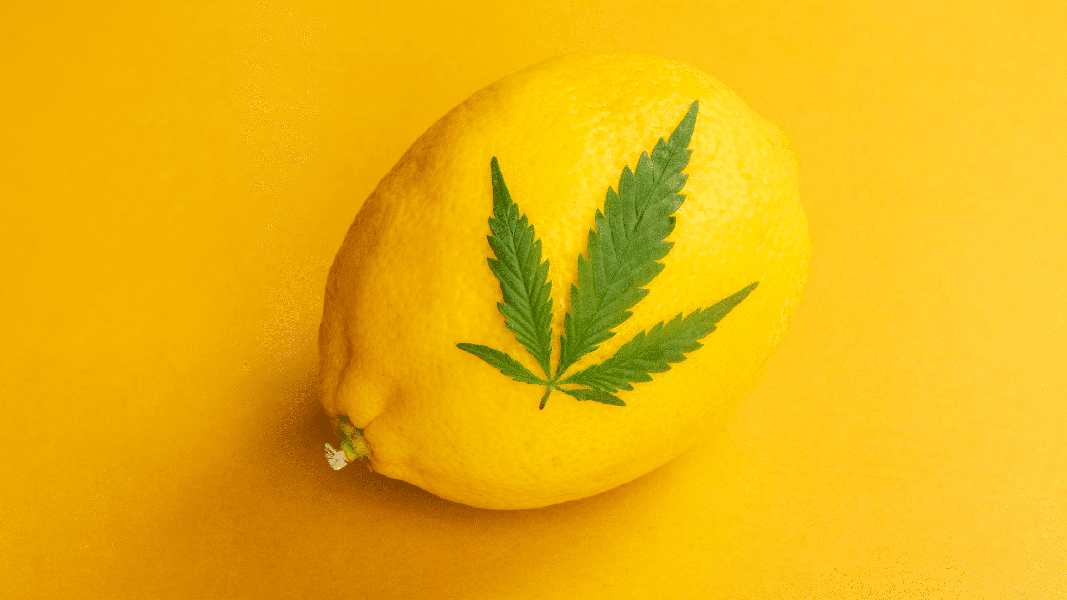The Science Behind Terpenes and Their Impact on Cannabis Effects
Understanding the Entourage Effect
Table of Contents
- Understanding the Entourage Effect
- Terpenes: More Than Just Flavor
- CB1 Activation: A Closer Look
- Diverse Responses: A Spectrum of Effects
- Synergistic Effects: A New Frontier
- Understanding the Complexities of Terpenes and Cannabinoids
- Redefining the Entourage Effect
- Potential Therapeutic Implications
- Tailoring Cannabis for Individual Needs
- Navigating the Complexities of Cannabis Research
- Learn More About Cannabis Science
- Beyond THC and CBD: Exploring the Synergy of Terpenes
- Harnessing the Entourage Effect: Choosing Cannabis Products Wisely
A decade ago, most cannabis consumers couldn’t differentiate between a terpene and a cannabinoid. Today, the landscape is vastly different. Cannabis flower is categorized based on its terpene profile, with producers incorporating terp blends into edibles and concentrates. Limonene has become almost a household name.
This shift is driven by the fascinating flavors and aromas terpenes impart, along with their potential health benefits.1 Recent research suggests that some terpenes might even contribute to the cannabis high.
Terpenes: More Than Just Flavor
A 2021 study2 by University of Arizona scientists concluded that certain terpenes exhibit ”cannabimimetic” properties (in a mouse model of cannabis intoxication), potentially enhancing cannabinoid activity. This month, a groundbreaking paper published in the journal *Biochemical Pharmacology*3 by Israeli researchers reports that three specific cannabis terpenes—at concentrations mirroring those found in actual cannabis plants—significantly amplify THC signaling on the CB1 receptor.
CB1 Activation: A Closer Look
Utilizing an *in vitro* cellular model, the Israeli team compared CB1 receptor activation by 16 different cannabis terpenes to that of THC alone and THC-terpene blends with a botanically relevant ratio of 10:1. When examined individually, all 16 terpenes activated CB1, at approximately 10% to 50% of the activation level achieved by THC alone. While their chemical structures vary considerably, both terpenes and cannabinoids share key characteristics; they belong to a larger group of plant compounds known as terpenoids. In fact, cannabinoids are technically classified as “terpeno-phenolic” substances.
Diverse Responses: A Spectrum of Effects
Subsequently, the researchers investigated terpenes and THC in combination. Their findings reveal a wide range of responses. In the cases of beta-pinene and geraniol, the mixtures produced a smaller impact than the sum of their individual components, suggesting these terpenes might negate some of THC’s activity. For eight of the THC-terpene blends, including several common cannabis terpenes—alpha-pinene, beta-caryophyllene, bisabolol, eucalyptol, humulene, myrcene, nerolidol, and terpinolene—CB1 activation equaled that of THC alone. The presence of the terpene appeared to have no discernible effect.
However, with three other terpene-THC blends—linalool, ocimene, and terpineol—the researchers observed an additive effect, meaning CB1 activation equaled the sum observed with THC and the terpene individually. In essence, if the terpene was a 3 and THC was a 7, the combination was a 10.
three terpenes—limonene, borneol, and sabinene—produced a synergistic effect with THC. In these instances, the whole was greater than the sum of its parts: an 11 or 12 rather than the anticipated 10.
Synergistic Effects: A New Frontier
The researchers consider this latter finding their most significant discovery. It represents the first demonstration of THC-terpene synergism in a controlled *in vitro* setting, lending credence to the paper’s title: “Selected Cannabis Terpenes Synergize with THC to Produce Enhanced CB1 Receptor Activation.”
Does this constitute evidence for the fabled cannabis entourage effect? Strictly speaking, no, according to the paper’s authors. They note that the term “entourage effect” often encompasses a broader range of interactions between cannabinoids, terpenes, and other plant compounds. While their study provides compelling evidence for synergistic effects between specific terpenes and THC, further research is needed to fully elucidate the complex interplay within the cannabis plant.
The Entourage Effect: More Than Just a Buzzword?
Understanding the Complexities of Terpenes and Cannabinoids
The concept of the “entourage effect” has become increasingly popular in the cannabis world, suggesting that cannabinoids like THC work synergistically with other plant compounds, particularly terpenes, to produce a more potent and nuanced experience. However, recent research is challenging this traditional understanding, raising questions about the true nature of these interactions. A 1998 article published in the European Journal of Pharmacology4 introduced the term “entourage effect” to describe instances where compounds that don’t directly bind to CB1 or CB2 receptors still influence the endocannabinoid system.
Redefining the Entourage Effect
While terpenes are known to activate CB1 receptors, this direct interaction challenges the original definition of the entourage effect. As stated by the authors of the aforementioned study, “Provided that cannabis terpenes show direct agonism at CB1 receptor,” THC-terpene results are “past the classical definition of entourage.” This suggests a need for a more nuanced understanding of how terpenes and cannabinoids interact.
Potential Therapeutic Implications
Despite the debate surrounding its definition, the study’s findings regarding THC-terpene interactions at ratios similar to those found in cannabis plants and at low terpene concentrations hold significant implications for both future research and real-world cannabis use. The discovery that different terpenes can modify THC activity in various ways is particularly noteworthy. The authors highlight a synergistic effect observed with limonene, borneol, and sabinene. While limonene is one of the most common cannabis terpenes, borneol is less prevalent, and sabinene is even rarer. This suggests that these specific terpenes could be intentionally incorporated into cannabis extracts to enhance the effectiveness of their THC content.
Tailoring Cannabis for Individual Needs
The authors propose that “using chosen terpenes might allow decreasing the THC dose in some therapies, and consequently, probably minimizing the THC-related adverse effects.” This approach could be particularly beneficial for sensitive populations such as children and the elderly. Furthermore, they suggest that terpene enrichment could enable personalized cannabis formulations tailored to individual needs and preferences, even adjusting for different times of day, like daytime versus sleep.
While these statements are speculative and not always supported by robust scientific evidence, it’s important to acknowledge that preclinical findings often don’t directly translate into real-world experiences. The authors’ affiliations with the Bazelet Group, a medical cannabis producer known for its “breakthrough technology” in formulating specific cannabinoid-terpene blends, raise questions about potential biases.
As always in cannabis science and medicine, the complexities of human biology and individual responses often exceed what can be captured in laboratory settings. However, this study provides further evidence of the intricate interplay between terpenes, cannabinoids, and the endocannabinoid system. TheTrendyType will continue to explore these fascinating interactions in future articles, delving deeper into specific terpenes like beta-caryophyllene, often referred to as the “super terpene.”
Learn More About Cannabis Science
For a comprehensive understanding of cannabis science and its implications, visit TheTrendyType’s dedicated cannabis science section. We provide evidence-based information on various aspects of cannabis, from cultivation practices to potential therapeutic benefits.
The Entourage Effect: Unlocking the Full Potential of Cannabis
Beyond THC and CBD: Exploring the Synergy of Terpenes
While THC and CBD often take center stage in discussions about cannabis, a fascinating phenomenon known as the “entourage effect” highlights the crucial role of other compounds, particularly terpenes. These aromatic molecules contribute significantly to the overall experience of cannabis, influencing its aroma, flavor, and therapeutic effects.
Recent research has shed light on the intricate interplay between terpenes and cannabinoids like THC and CBD. Studies have shown that certain terpenes can enhance the effectiveness of these primary compounds, leading to a more potent and balanced effect. For example, a study published in *Scientific Reviews* demonstrated that specific hashish sativa terpenes exhibit cannabimimetic properties, meaning they can mimic the effects of cannabinoids by interacting with the endocannabinoid system. This suggests that terpenes can amplify the therapeutic benefits of THC and CBD, potentially leading to more effective pain management, anxiety relief, and other positive outcomes.
### The Power of Synergy: Terpenes and Cannabinoid Interactions
Research published in *Biochemical Pharmacology* further supports this concept, revealing that selected hashish terpenes synergize with THC to produce heightened CB1 receptor activation. This amplified activation can lead to a more pronounced psychoactive effect, as well as potentially enhanced therapeutic benefits depending on the specific terpene profile.
The synergistic relationship between terpenes and cannabinoids extends beyond just THC and CBD. A study in *European Journal of Pharmacology* demonstrated that inactive endogenous fatty acid glycerol esters, often overlooked components of cannabis, can actually enhance the activity of 2-arachidonoyl-glycerol (2-AG), a naturally occurring endocannabinoid. This finding highlights the complex web of interactions within cannabis and emphasizes the importance of considering the entire plant profile for optimal therapeutic outcomes.
Harnessing the Entourage Effect: Choosing Cannabis Products Wisely
Understanding the entourage effect empowers consumers to make informed decisions about their cannabis choices. By selecting products that feature a diverse range of terpenes alongside THC and CBD, individuals can potentially unlock a more holistic and balanced experience.
For those seeking specific therapeutic benefits, researching different terpene profiles and their associated effects can be invaluable. For example, if you’re looking for pain relief, strains rich in myrcene and caryophyllene might be beneficial. If relaxation and stress reduction are your goals, consider products with high levels of linalool and limonene.
Remember, the world of cannabis is complex and multifaceted. By embracing the concept of the entourage effect and exploring the diverse range of terpenes available, you can unlock a deeper understanding of this remarkable plant and its potential to enhance well-being.
For more information on specific terpene profiles and their effects, visit our Terpene Guide.


